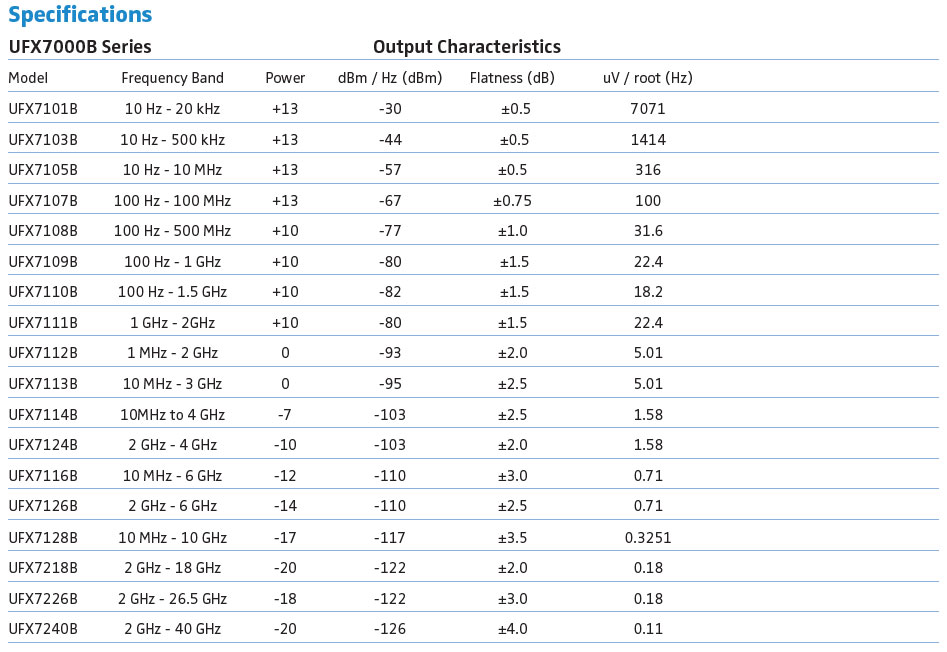Open as PDF
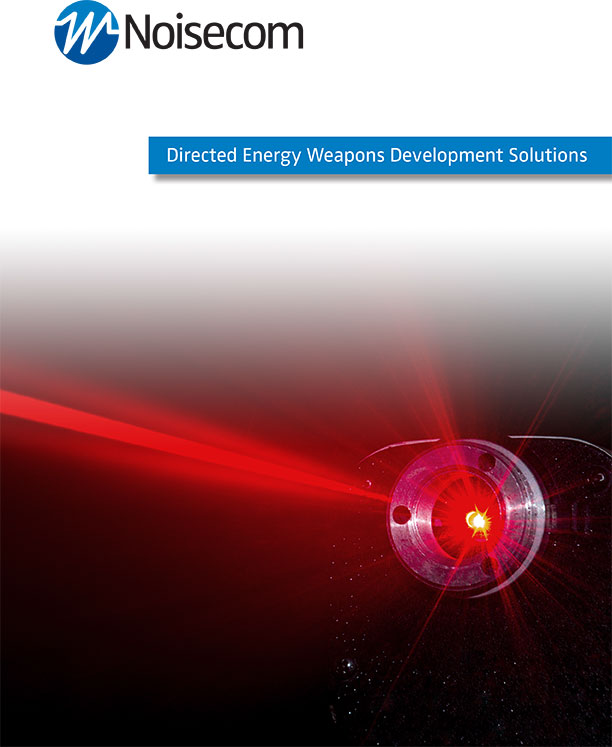
As the aerospace and defense industry adapts to evolving challenges, it prompts innovation of modern, high-tech weaponry. One of these emerging technologies is in directed energy weapons (DEW), which are designed to neutralize long-range targets with pinpoint accuracy using highly focused laser energy, delivering an edge over traditional weaponry to counter arising security threats across all domains. DEW can provide an endless magazine if enough power is available, thus eliminating the logistical problems of finite ammunition supplies and lowering the total cost per shot. Its speed-of-light delivery can neutralize distant targets while significantly reducing collateral damage. In addition, DEW offer a wide range of platform flexibility, capable of launching from large vehicles; ships at sea; fixed, land-based structures; and airborne platforms, among others.
Since DEW provide a unique response to rapidly emerging global threats, many industries and military branches are channeling research and development (R&D) efforts toward directed-energy technologies poised for near-term deployment. However, certain design issues must be addressed in order to achieve the high power levels necessary to support laser-based DEW deployment in critical security operations. To reach the optical powers required for laser weaponry, multiple laser modules are combined into a single beam, but the high optical intensity of each module over the fiber can generate Stimulated Brillouin Scattering (SBS) issues, which create a sizeable and destructive return loss.
Noisecom noise generators and standalone noise sources can address the critical needs of SBS reduction by driving coherence spreading to minimize retroflected scattering, allowing for high optical power transmission. Coherence spreading using a random noise source reduces each laser module’s sharp waveform (peak power) by modulating the phase of the laser. Although the peak power is reduced, the average power remains the same, therefore the overall optical power of the laser is maintained while at the same time reducing the negative effects of SBS.
Using a Noisecom Additive White Gaussian Noise (AWGN) source offers a cost-effective, easy-to-use, environmentally robust, and compact coherence-spreading methodology that delivers truly random noise for high-power lasers ranging from R&D designs to production-ready systems. For over 30 years, Noisecom has been designing noise generation devices and instruments for Carrierto- Noise, signal jamming and impairment, multipath fading, satellite test, and calibration across a wide variety of industries. Noisecom has a depth of experience unmatched in the industry and works closely with technical end users to find the right project for the application with both off-the-shelf and customized solutions. This experience and close relationship with customers and markets has led to the development of programmable AWGN generators, amplified noise modules, and integrated solutions specifically designed to address SBS reduction to support high optical power in laser-based DEW design.
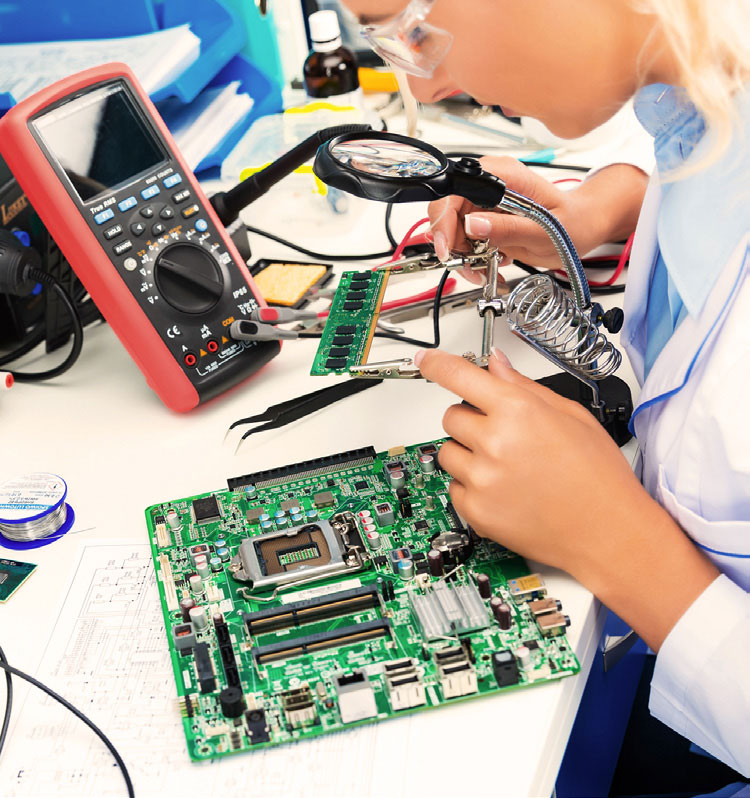 Customization
Customization
Each system is different, and the set of SBS challenges vary in every device or system. This diverse range of unique laser system requirements is why Noisecom products, from self-contained benchtop instruments to individual amplified noise modules, are highly customizable to meet the unique needs of challenging applications. Products can be customized to include precision attenuators, filters, and single/multiple stage amplifiers to serve DEW still under test or ready for production. Whether it is a single component or integrated system, Noisecom has a broad range of capabilities and solutions for every budget.
SBS Reduction in Product Development
In order to progress laser-based DEW passed the experimental stage into practical, high-performing military weapons, designers need a flexible means to validate their designs and finalize specifications. Choosing an approach to manage SBS-related issues in the lab may be very different than the approach needed while in the field, or even when deployed as part of a DEW system. In many cases a fixed output noise source is the ultimate solution for reducing SBS in DEW designs, however, these noise sources do not give designers the flexibility and control they need during development to optimize performance. Programmable noise generators provide a high level of control over noise that can be injected into a system by providing variable attenuation, filtering, and amplification, enabling a broad range of noise generation capabilities for design validation and determining the exact noise output for any laser system requirement.
The Noisecom UFX7000B programmable noise generator provides a flexible architecture to create the unique noise signals required for reducing SBS in laser system designs. Precision components provide high output power and superior flatness while controllable attenuators, switches, and filters ensure that noise is generated and applied to the system at the right power levels and frequency bands. The output from the UFX7000B is connected to an optical phase modulator that is connected to the laser pump to directly drive coherence spreading. Combining a noise source with variable attenuation, filtering, and amplification enables the UFX7000B Series to deliver a programmable, self-contained unit that suits a variety of design needs. Due to the instrument’s high level of versatility and control over noise power levels and frequencies, it is an ideal device for proof-of-concept DEW in the R&D stage to aid designers in determining system requirements and specifications.
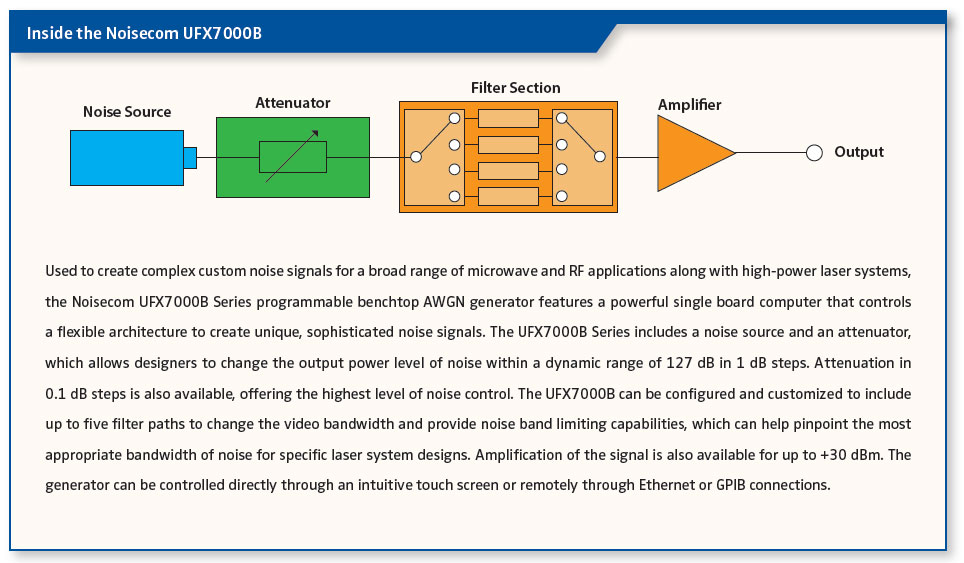
The UFX7000B precision programmable noise generator acts as a complete, self-contained coherence spreading solution for SBS reduction through coherence spreading. The user-controllable output of the AWGN signal is ideal for validating and verifying design alternatives during development. The internal attenuation, filtering, and amplification capabilities of the generator provide the flexibility in frequency, band limitation, and power level adjustment that system designers need to optimize their laser system performance. The UFX7000B Series provides a noise source with a wide range of frequency bands up to 40 GHz, the ability to control attenuation of output power in 0.1 dB steps, band limiting capabilities supported by multiple filter paths, and signal amplification up to +30 dBm.
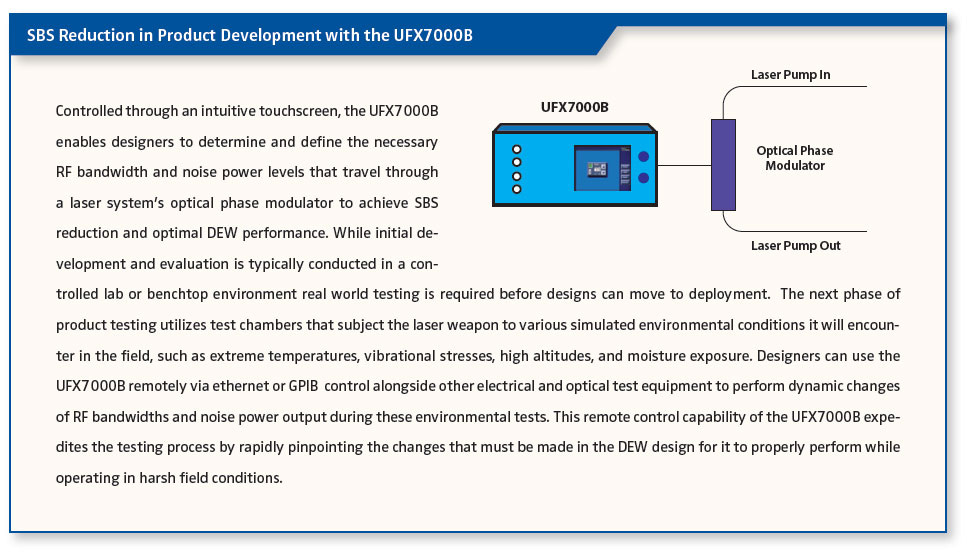
SBS Reduction in System Deployment
Once laser systems move from the initial design stages and are prepared to be released for production, SBS reduction needs to be managed by smaller, compact, lower-cost noise sources that can be deployed in each manufactured system. While in the lab, engineers must determine the right frequency bands and power levels of a noise source for coherence spreading to later be fixed and packaged in something that can be embedded into the final design. This is where engineers would typically identify and select an amplified noise module that produces the exact noise signal they need based on the development work with a production generator. The fixed output module is carefully selected for the specific laser system it will be embedded in for deployment.
Producing AWGN up to +13 dBm in a compact, low-cost form factor, the NC1000 amplified noise module delivers the exact noise signal at the right power level and in the right bands for a deployed laser system. Inside the NC1000 module is a hermetically packaged noise diode that has been pre-selected for special performance characteristics. The standard module is designed for a 50 Ω load impedance and has bandwidths from 10 MHz to 18 GHz. Beyond the standard configuration in the product range, various customizations are available to meet specific requirements.
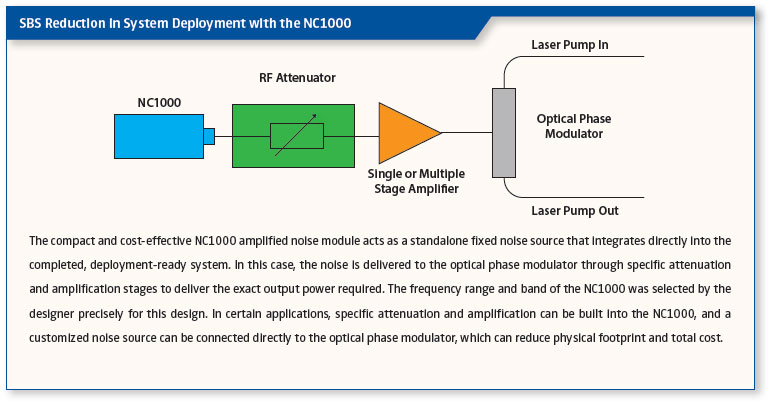
NC1000 Amplified Noise Source
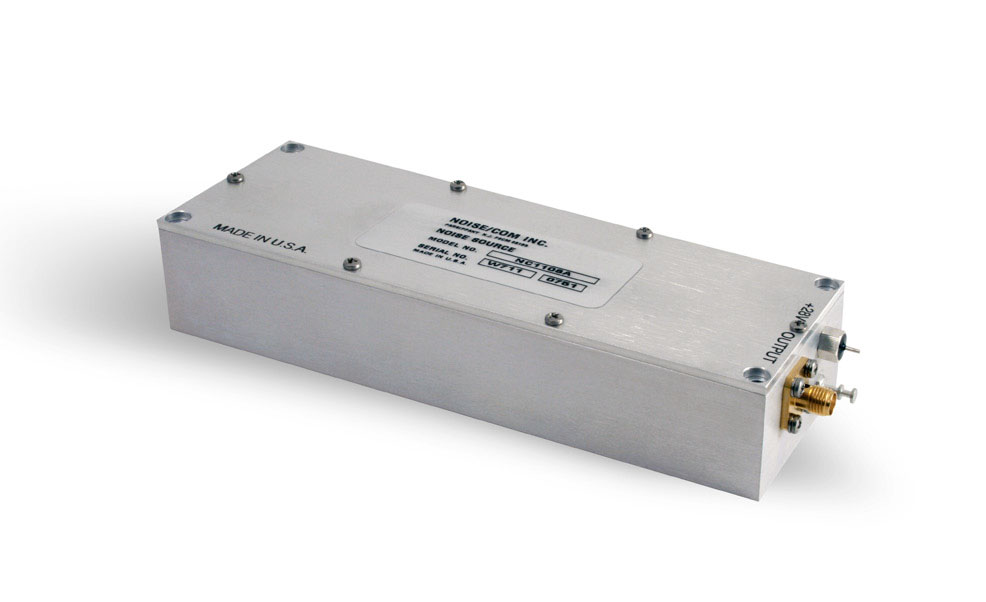 The NC1000 Series of amplified noise modules produce AWGN up to +13 dBm and have bandwidths up to 18 GHz. The high-power, compact modules provide wide video bandwidth signals that are ideal for RF jamming systems and signals to reduce SBS in optical communications and DEW systems. The bandwidth output power and flatness can be modified for specific applications. The newly developed, TTL-controlled attenuation feature allows power output control so the unit can be operated in a system externally.
The NC1000 Series of amplified noise modules produce AWGN up to +13 dBm and have bandwidths up to 18 GHz. The high-power, compact modules provide wide video bandwidth signals that are ideal for RF jamming systems and signals to reduce SBS in optical communications and DEW systems. The bandwidth output power and flatness can be modified for specific applications. The newly developed, TTL-controlled attenuation feature allows power output control so the unit can be operated in a system externally.
High Power Modules
50 Ω Load Impedance (Package 1, +28 VDC Operation is standard)50 Ω Load Impedance (Package 1, +28 VDC Operation is standard)
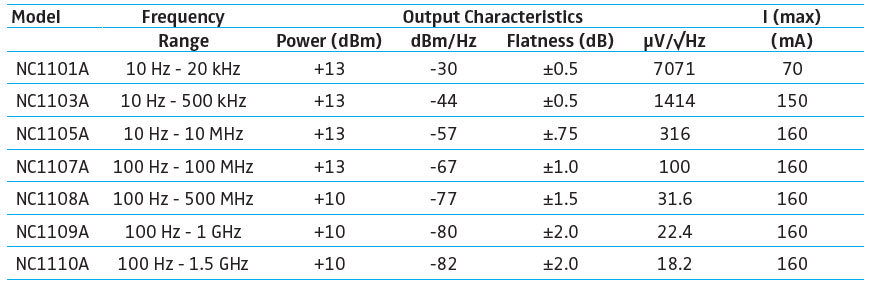
High Crest Factor Modules
50 Ω Load Impedance (Package 3, +15 VDC operation is standard)50 Ω Load Impedance (Package 3, +15 VDC operation is standard)
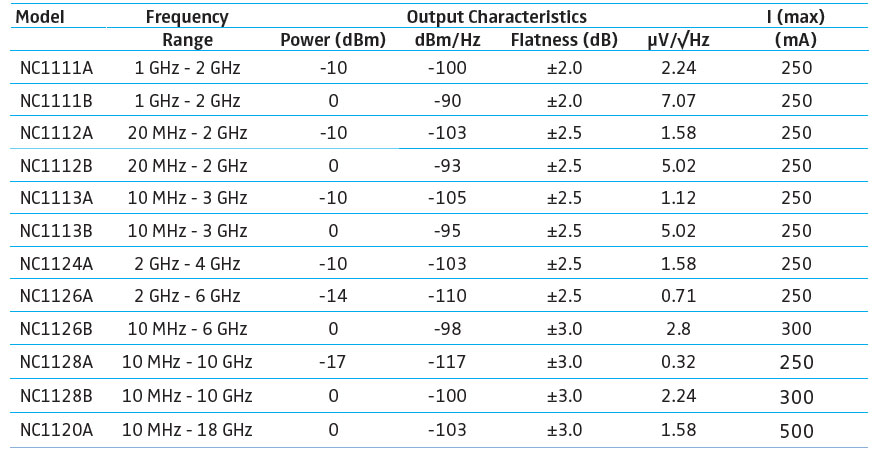
UFX7000B Programmable Noise Generator
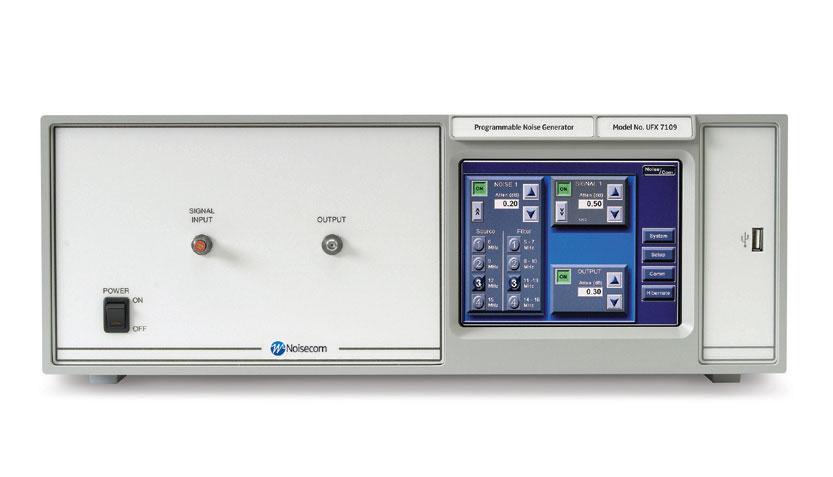 The Noisecom UFX7000B broadband AWGN noise generator has a powerful single board computer with flexible architecture used to create complex custom noise signals for advanced test systems. This versatile platform allows the user to meet their most challenging design requirements. Precision components provide high output power with superior flatness, and the flexible computer architecture allows control of multiple attenuators, switches, and filter banks.
The Noisecom UFX7000B broadband AWGN noise generator has a powerful single board computer with flexible architecture used to create complex custom noise signals for advanced test systems. This versatile platform allows the user to meet their most challenging design requirements. Precision components provide high output power with superior flatness, and the flexible computer architecture allows control of multiple attenuators, switches, and filter banks.
